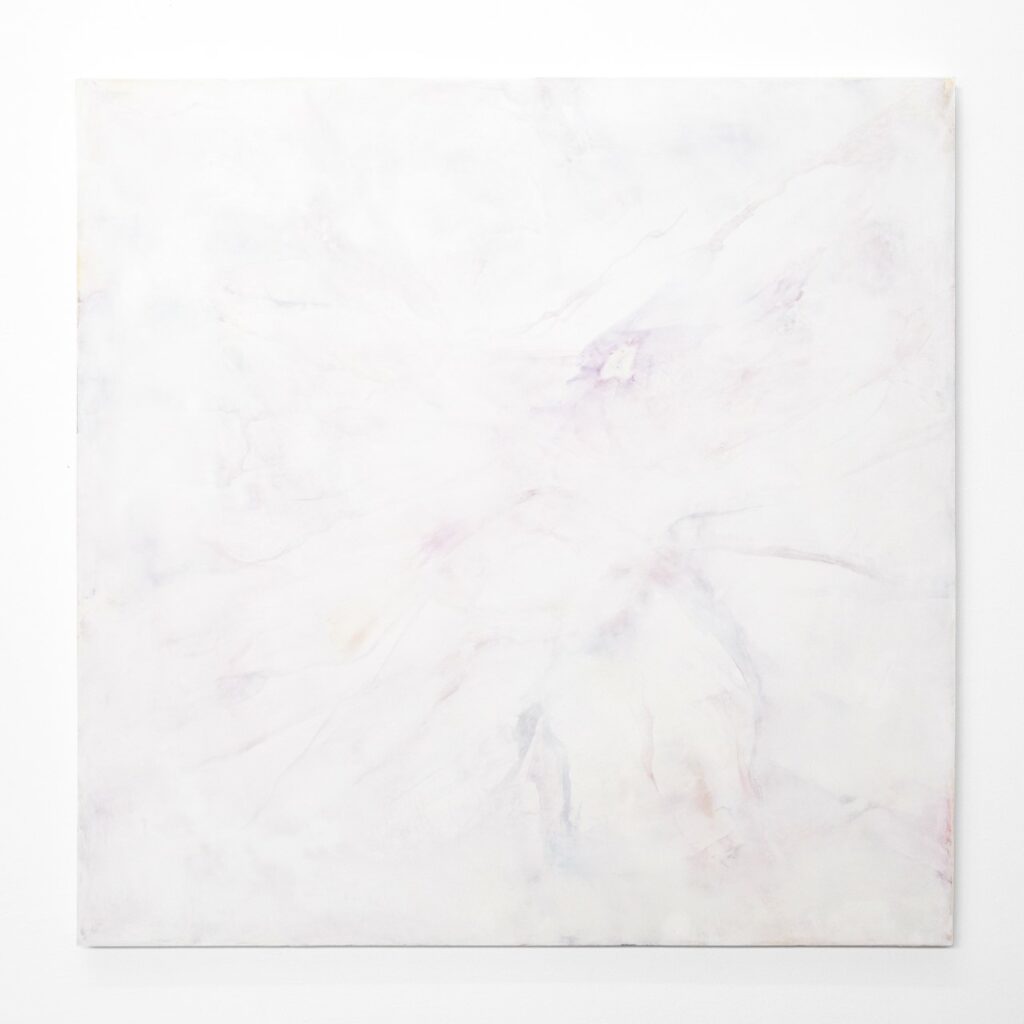We often want to categorize artists between abstraction and figuration. And yet, the painters who work mainly with color, line and form also make references and forms that can suggest the body, a landscape and objects. Even monochrome paintings can evoke familiar elements. Just as figurative painters can suggest a subject in a simplified form.
Raphael Lecoquierre
Raphaël Lecoquierre, multidisciplinary artist born in Saint-Cloud in 1988 (FR), living and working in Brussels (BE), graduated in 2010 from ENSAPC and in 2014 from ENSAV. His work focuses on abstract issues, reductionism, poetry and colors through paintings, sound, installations or video. He is interested in the persuasiveness of images, the desires they can generate and the relationship they maintain with memory and time. Raphaël Lecoquierre evokes the evocative and poetic potential of sober and refined forms through a stream of random and alienating visual images that overwhelm us.
Robert Suermondt
Robert Suermondt departs from an existing image: a print on a cardboard, remains of a tape, traces of color on a piece of paper, a photograph in a newspaper or a framed part of a previous canvas. Using collage or painting techniques, Robert’s artistic approach consists of creating another that presents itself as a new unity, though paradoxical and ambiguous, as when our eye finds a “grasp” the final object is always eluding and takes a different meaning.
Peter Downsbrough
Peter Downsbrough (°1940) is an American artist born in New Brunswick (New Jersey, USA), and lives in Brussels (BE) since 1989. Peter Downsbrough’s work deals with the complex relationship between architecture, typography, and linguistics. His work isn’t about the object or the material. It is about itself and its relation to the environment.
Framing, symmetry, perspective, and polarity are all aspects of Peter Downsbrough’s diverse practice
Nathalie Ledoux
Nathalie Ledoux’s landscapes employ naturalistic and virtual perspectives, leading to a subtle play of associations and memories, references to the romantic era and universal narratives. Her paintings inhabit an oneiric universe where abstraction is used to activate romantic landscape or impressionist codes and contemporary feelings in the viewer. Deserted and sublime scenery is broken down by the material concerns of texture and color. The atmospheres that lead to contemplative moods are interrupted by contemporary pop and technological associations (such as colors produced by thermic graphs). Ledoux achieves a subtle and contemporary painterly poetics.
Jeanine Cohen
Jeanine Cohen (1951, Belgian, based in Brussels), is a Belgian painter. Halfway between constructive rigor and the dissolution of the shape, Jeanine’s paintings – using the surface as an integral part of the art work – integrate the concepts of space, time and movement, with a focus on colour as the primary element. The work presents itself as a wooden construction of different geometries and sizes, appearing to have no apparent canvas. It is partially brightly coloured on the surface and shines with its own light. Colour is not seen directly but as a reflection on the wall. The result is a sort of architectural rainbow of colour and light using optimal use of the space triggering multiple perspectives proposing a viewer an endless range of various perceptions, all different than the classical frontal view.

